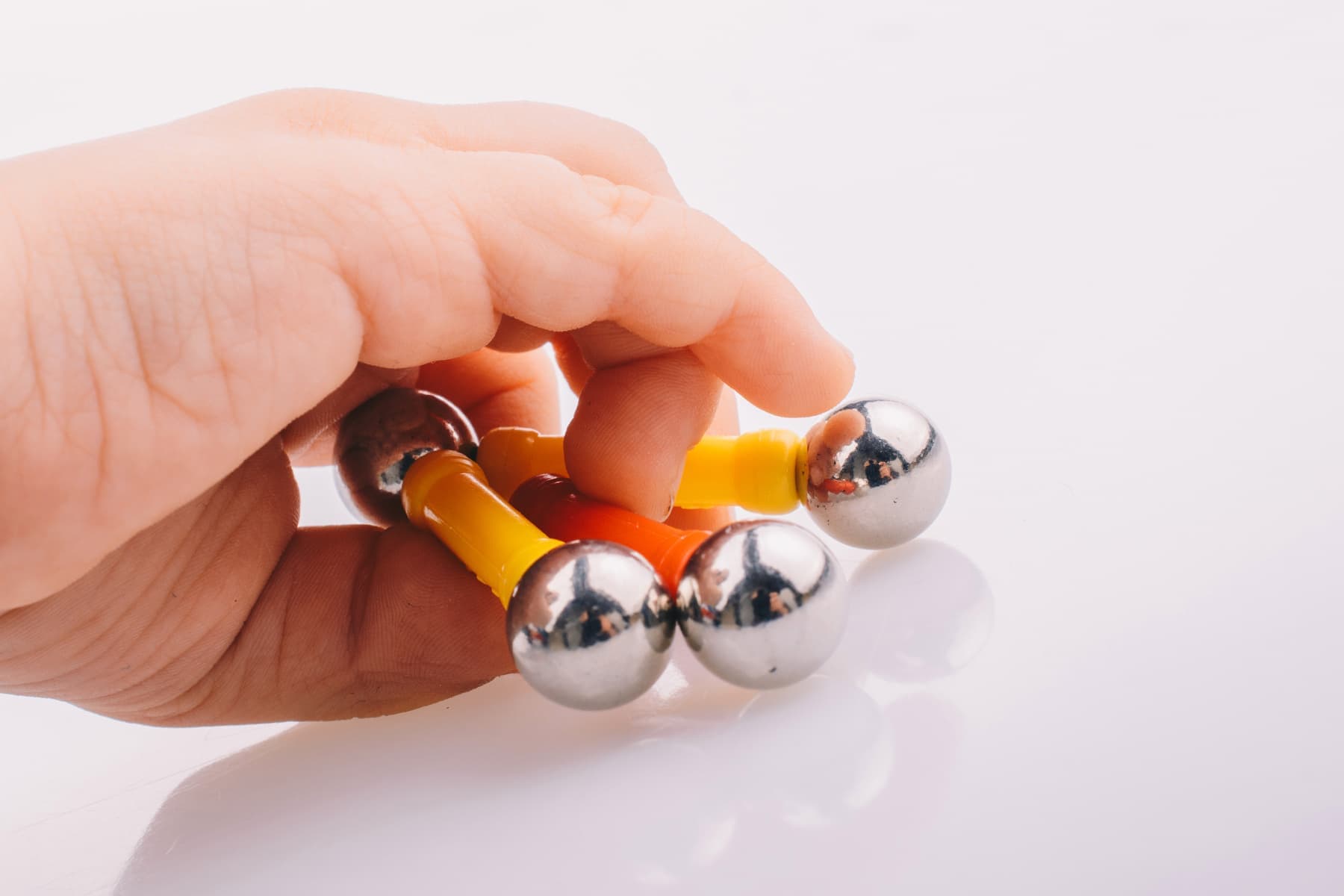|
Getting your Trinity Audio player ready...
|
Dec. 8, 2022 – Sarah Combs, MD, has been an attending physician in the emergency department at Children’s National Hospital in Washington, DC, for 6½ years.
She knows how dangerous toys can be. She has seen the damage they can do.
“Toy-related injury can mean children pick up a little marble and pop it in the ear canal, let’s say, or it can mean the more severe injuries, such as aspiration of uninflated balloons into the airway area, which unfortunately I have also seen,” Combs says.
That first-hand knowledge includes death.
“I won’t be too specific here for patient privacy reasons, but I can say that the case that really sticks with me, even though it was years ago now, involved a small child who aspirated [sucked from their mouth into their airway] an uninflated balloon. Absolutely tragic.”
The mother of two small children says it can sometimes be tough treating kids for toy-related injuries.
“On the one hand, it can lead to increased empathy with the parents; on the other, it can be hard not to worry excessively. My 6-month-old is currently in the phase where literally anything and everything she can reach goes directly into her mouth,” Combs says.
She says the most severe injuries – the ones that can be fatal – are the ones that involve the airway.
“Those are the big bad ones we worry about,” she says. “So that’s why we really worry about giving uninflated balloons to little children in particular, any kid under 8, because the issue is once you suck one of those balloons down to your airway, it’s this kind of floppy flap that will continually cover your airway. And then in that same vein, the ones that we see that are severe, often marbles, very small marbles that again get lodged and stuck in the back of the throat.”
‘Trouble in Toyland’
This year, the U.S. Public Interest Research Group’s 37th annual toy safety report “Trouble in Toyland 2022” is focused solely on recalled toys. Some of these toys can still be purchased online after they were recalled for being dangerous. It’s a reminder to all that buying some toys online can come at a heavy price.
Teresa Murray, consumer watchdog with the U.S. PIRG Education Fund, and author of the report, set out to determine the scope of the problem and see how many recalled toys were out there for consumers to buy.
Murray bought them from eight merchants.
“We were absolutely shocked that it was so easy to buy recalled toys online,” she says.
“And the vast majority of the toys we purchased were new, new in the box or new with tags, not like used toys that you might get at a garage sale or something like that.”
She and her team bought more than 30 toys that had been recalled, even though it is illegal to sell recalled toys. Illegal, yes, but those toys are still not hard to get.
According to the Consumer Product Safety Commission, every year, about 200,000 people end up in an emergency room because of a toy-related injury.While that number has dropped a bit over the last decade, it doesn’t include injuries not severe enough to require a trip to the ER.
“We’re not talking about, ‘OK you got cut by something, or you got poked in the eye a little bit or you got burned by something,”’ Murray says. “But something that is serious enough that would cause somebody to go to the emergency room, you know it’s pretty serious.”
And 79,000 of those patients are children 4 and under.
Land of Recalled Toys
Toys are recalled for a variety of reasons, including having small parts that can break off and cause choking, containing toxic chemicals, being flammable, and being able to cause cuts and strangulation.
But the common thread is a dangerous defect was discovered, often after a severe injury happened.
The report focuses on three areas of concern: recalled toys that can still be purchased, the role parents and caregivers play in protecting their children, and counterfeit toys sold in stores and online.
Many of them come from overseas and don’t meet U.S. safety standards.
The toys Murray purchased included stuffed animals, activity balls for infants, action figures, musical toys, and bath toys. Two contained toxins with high levels of phthalates or lead – a chemical banned in the 1970s:
- Army Action Figure Playsets by Blue Panda
- 6-inch Aflac Plush Promotional Ducks by Communicorp
Some posed a choking hazard due to small parts breaking off. Those were:
- Disney Baby Winnie the Pooh Rattle Sets from Walgreens
- Activity Loops by The Manhattan Toy Co.
- Early Learning Centre Little Senses Lights & Sounds Shape Sorter Toys by Addo Play
- Forky 11” Plush Toys from Disney Pixar’s Toy Story
- Kid O Hudson Glow Rattles by PlayMonster
The other toys included:
- DigitDots 3-millimeter and 5-millimeter Magnetic Balls by HD Premiere, which cause injuries to the digestive system if two or more are swallowed
- Blue’s Clues Foot to Floor Ride-on Toys by Huffy Corp., which can tip forward and cause falls
- Kidoozie Play Tents and Playhouses by Epoch Everlasting Play, which don’t meet industry flammability standards
- Ubbi Connecting Bath Toys by Pearhead, which can cause cuts when pieces break off, creating a choking hazard
Online Marketplaces Raise Risks
Murray believes major online platforms like Facebook Marketplace and eBay need to better screen listings and not allow recalled toys to be sold on their sites.
“These companies, these major marketplaces do have the capacity to detect when a recalled toy has been listed on their site, so the fact that they’re for sale, it’s a problem,” she says. “If you’re the person who unknowingly buys a dangerous recalled toy and you give it to somebody that you love and they get hurt with it, it’s a big problem.”
Facebook Marketplace did not respond to a request for comment, but eBay did.
“eBay works closely with a range of regulatory agencies across the world to promote product safety and protect consumers from unsafe products. We take product recalls very seriously and monitor announcements from the CPSC to ensure recalled items are blocked or removed. We are pleased the PIRG team received one of our recall notices demonstrating our commitment to monitoring for and notifying consumers of recalls.”
Murray says the emails she received from eBay that the items had been recalled were sent after she had already received the toys.
Older children are not immune from dangerous toys. Hoverboards, scooters, and other riding toys pose a significant threat and can result in head injuries and broken bones. Toys that can connect to the internet through WiFi and Bluetooth and make play more interactive are wildly popular, but they can also expose children to possibly risky situations.
Parents should make sure they understand all the toy’s features, including cameras, microphones, and data gathering.
“Not to say it’s necessarily a problem for a child to interact with a toy,” Murray says, “but the parents need to know what that toy can do and what information it’s gathering about your little kid and, more importantly, what it’s going to do … with that information.
“You don’t want information about your child ending up in some database in a foreign country.”
Warning the Public and the Industry
Alexander Hoehn-Saric, chair of the Consumer Product Safety Commission, says they are focused on warning the public about unsafe products. He says in the last year, they’ve removed more than 40,000 dangerous products from e-commerce sites, including many of the recalled toys on this list.
“Always pay attention to age labeling and safety warnings on toys to make sure they are appropriate and safe for that child,” Hoehn-Saric says. “Think about everyone in the house in case the kid you’re buying the present for has a younger brother or sister.”
Safety standards are in place for all toys sold in the U.S. intended for use by children 12 and under. They must be tested by a third party and certified that they conform to the federal toy safety standard set by Congress. There are different standards for different age groups.
U.S. Sen. Richard Blumenthal, D-CT, chair of the Subcommittee on Consumer Protection of the Senate Commerce Committee, is leading the charge on Capitol Hill.
“I am just astonished and appalled at the numbers of recalled products freely available on Facebook Marketplace and eBay,” he says. “I am just flabbergasted at the absence of any real responsibility on the part of these platforms for what they are selling. Literally they are a source of ‘Trouble in Toyland,’ potentially dangerous and even deadly toys freely available without any warning to parents and caregivers.
While buyers have some responsibility, he says, “buyer beware is not enough. These platforms have a moral and a legal responsibility, in my view, to do better.”
In August, Congress passed, and President Joe Biden signed into law, a bill called Reese’s Law.It directs the Consumer Product Safety Commission to create safety standards for button cell, lithium coin, and other small batteries that can injure or kill children if swallowed. The bill was named after 17-month-old Reese Hamsmith, who died in 2020 after swallowing a button battery from a remote control. It burned a hole in her esophagus.
The law requires that these batteries have warning labels telling adults to keep them out of children’s reach; that battery compartments be made difficult to open by children 6 years old and under; and that battery packaging follow federal standards and be child-resistant.
Two years before the bill was even introduced, battery maker Duracell picked up the mantle and began coating three sizes of its popular button batteries to make them taste bitter, hoping to discourage kids from licking or swallowing them.
The bitter batteries are being lauded by Blumenthal, Murray, and Combs, who believe other battery makers should follow suit.
How to Protect Your Family
Dev Gowda, assistant director of Kids in Danger, an organization dedicated to fighting for product safety and protecting children, has this tip to share with parents: “Look for the small parts warning label on packaging of toys.”
If the toy is safe for children under 3, it’ll have an age grade that includes those ages. If it is for children ages 3-6 and has small parts, it’ll have a warning. If you don’t have the packaging, you can do the toilet paper tube test right at home. If a toy or part of a toy fits through the toilet paper tube, then the toy is not suitable for children under 3.
And there are new federal guidelines for tiny high-powered magnets. Loose magnets or those that could possibly come out of a toy must now be too large to swallow or too weak to connect inside the body if more than two are swallowed.
The report had disturbing examples of these types of injuries:
- A 3-year-old boy swallowed magnets from a set owned by his sister. He had surgery to remove more than 150 small magnets and magnetic balls.
- A 9-year-old boy swallowed two magnets.At the hospital, an emergency endoscopy to retrieve them was not successful. He was admitted and given medication to help pass them.
- A 2½-year-old-boy swallowed four very strong magnets from a cooking toy. They attached to each other and created holes in his intestines.After having emergency surgery to remove the magnets and repair the holes, he still had to have other surgeries.
- A 12-year-old boy swallowed 10 magnets. An emergency procedure removed nine of them, and he had to have surgery to remove the last one.
Joan Lawrence, senior vice president of regulatory affairs at the Toy Association in New York, says toy safety is the top priority for the toy industry.
“Bringing safe and fun toys to children and families is what we work on year-round,” she says. “In the U.S., we have mandatory toy safety standards for all toys sold here, and all toys sold in the U.S. must comply with over 100 different safety standards.”
Because of this, she says, toys in this country are among the safest consumer products in our homes. But with the increase of online shopping, Lawrence warns of counterfeit and knockoff products.
“We always say if a deal on a hot toy looks too good to be true, it probably is,” she says. “It’s probably better to buy the real thing or wait for a trusted retailer to restock the product than to buy a fake or cheaper alternative that has the potential to be unsafe.”
But if a Toy Association survey of 2,000 parents is any indication, there is still a long way to go. In it, 65% said they would knowingly buy counterfeit toys if they couldn’t find the real thing and 63% would buy counterfeits if they were cheaper than the actual toy.
For Sale, But Not Necessarily Safe
Ben Hoffman, MD, has been a pediatrician for more than 30 years. He’s spent the last 11 at Oregon Health and Science University in Portland.
The father of three and nationally recognized expert in child injury prevention and education is the past chair of the American Academy of Pediatrics Council on Injury, Violence and Poison Prevention. He’s seen his share of toy-related injuries in both young and older kids.
“There have been explosions associated with things like the hoverboards, you know significant burns,” he says “And we do see everything, unfortunately, and the sad fact is, all this is preventable.”
There is an assumption by the public, he says, that if something is being sold, that it’s safe, that somebody has determined that it’s safe, and it’s gone through some process to ensure that.
“But the fact of the matter is things, anything can be sold, and the regulatory process ends up being more reactive than proactive, and so things get in the market and, you know, end up in people’s homes without any proof that they’re safe for kids,” he says. “That to me is especially scary and unfortunate.”
Hoffman wants people to understand what they may be getting into when they jump online to buy toys. He believes parents should be “very leery” of buying stuff on electronic marketplaces. Especially sites they don’t recognize.
“I think it’s one of the unfortunate consequences of e-marketplaces, is that it gives cover for unscrupulous people to make a buck at the significant expense of kids,” he says.
When a product is recalled, it’s because there’s identified risk associated with it. And unfortunately, he says, “we know that a lot of products that end up being recalled never get returned. They do end up in secondary marketplaces, and we used to see them in consignment stores and stuff like that. But now, with the electronic marketplaces, with web-based marketplaces that are nameless and faceless, it becomes even more complicated.”
Combs see this issue through the lens of stronger legislation.
“I certainly understand the struggle that parents and caregivers feel, as you want your children to explore and play but you also want them to do so safely,” she says. “It’s a balancing act – and a difficult one at that, which is why having some legislation and regulations in place is so important.”



